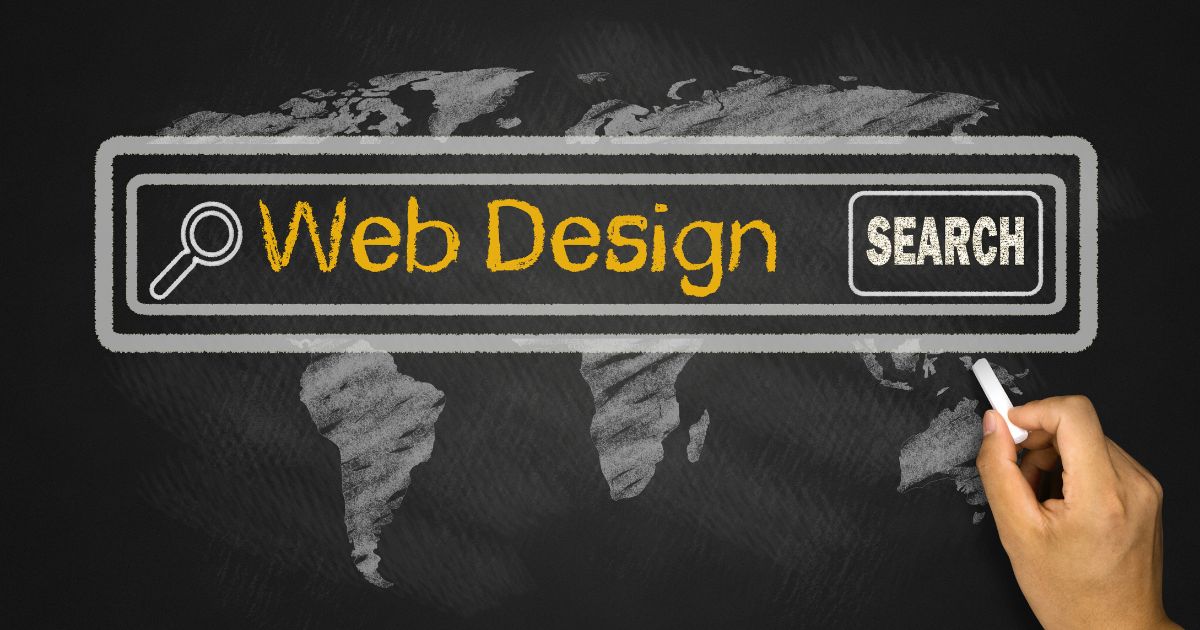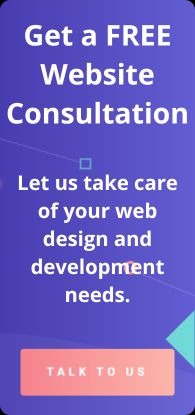
Web design and development are the backbone of any successful online presence.
When visiting a website, what demands your attention first?
Maybe it’s the layout, the color scheme, or how seamlessly everything flows.
That’s web design in action.
It’s the art and science of creating an engaging, visually appealing, and user-friendly experience.
On the other hand, there’s web development, and the engine under the hood makes the whole site work.
It’s where all the coding and technical magic happens, ensuring everything runs smoothly.
What’s the difference between web design and development?
Think of web design as the architect of a building.
Designers focus on the visual elements, like the structure, aesthetics, and how people will interact with the space.
They’re the ones who choose the color palettes, define the layout, and ensure everything looks and feels just right.
Meanwhile, web development is like the construction crew and engineers.
Developers take that vision and turn it into a fully functioning reality.
They handle all the behind-the-scenes work, making sure that every part of the website operates efficiently.
Both roles are essential for building websites and web applications that aren’t just attractive but also effective.
And here’s why this matters: businesses are now more reliant on their online presence than ever before.
Whether you’re a small business or a global brand, your website is often the first point of contact for potential customers.
That’s why web design and development have become such high-demand skills.
Companies are always on the lookout for talented web designers and developers who can create digital experiences that captivate and convert.
The demand isn’t just growing; it’s skyrocketing.
With so much focus on online interaction, web designers and developers have more opportunities than ever to build careers doing what they love.
Whether you’re drawn to the creative side of design or the technical challenges of development, this field offers a dynamic, ever-evolving career path.
The Role of Web Design
Web design is all about creating that first impression.
Imagine walking into a store where everything looks appealing and inviting.
That’s what a good website does;
it draws people in through its visual elements and overall website layout.
It’s a combination of creativity and functionality where design meets purpose.
At its core, web design is a creative process that revolves around the visual look of a website.
From the color scheme to the layout, every detail counts.
Visual designers and graphic designers focus on making sure everything fits together beautifully.
Colors aren’t chosen at random; color theory helps ensure that the right color palettes evoke the right emotions.
Tools like Adobe Photoshop and Adobe XD bring these ideas to life, allowing designers to play around with different possibilities until they hit that sweet spot of good design.
But web design isn’t just about making something look good.
UI designers (User Interface) and UX designers (User Experience) focus on creating seamless interactions.
Their job is to make sure users can easily navigate the site and enjoy their journey.
Every button and every scroll is part of a carefully crafted experience that keeps potential customers engaged.
And then, there’s responsive web design.
People use all sorts of devices to browse websites, from mobile phones to desktops.
A professional web designer ensures the site adapts and looks fantastic, no matter the screen size.
It’s not just about fitting everything onto smaller screens; it’s about maintaining a consistent user experience across different devices.
When you combine all of these elements: solid visual design, thoughtful user experience, and responsive adaptability, you end up with a website that doesn’t just exist but truly stands out.
That’s the magic that professional web designers bring to the table: they turn an idea into a digital space that welcomes visitors and keeps them coming back for more.
Get a FREE Website Consultation
Let us take care of your web design and development needs so you can focus on your business. We can handle new websites, landing pages, website redesign, and even maintenance.
Contact us today to get a free website consultation!
Web Developer Roles and Career Paths
Web development is a vast field with plenty of opportunities for those who love to create and problem-solve.
Each role within web development plays a vital part in bringing a website or web application to life.
From building the user interface to managing the servers, the different roles work together to create a seamless and functional experience for users.
Front-End Web Developers
Front-end web developers are the visual builders.
They take the designs crafted by graphic designers and UX/UI specialists and turn them into a functioning website.
These developers are experts in HTML, CSS, and JavaScript, using front-end frameworks to create web pages that look great on all devices.
Their job is to ensure that the visual elements are interactive and work perfectly across different screen sizes.
Back-End Developers
Behind the scenes, back-end developers are hard at work handling the server, database, and application logic.
These developers ensure that everything works smoothly on the server side, processing data in real-time and ensuring the security of the website.
Their expertise includes programming languages like Python, Ruby, and Java,
and they often work closely with front-end developers to ensure that the website functions as intended.
Full-Stack Developers
Some developers like to have their hands on every part of the process.
Full-stack developers act as a bridge between front-end and back-end development.
They understand both sides and can work on the entire project, making them a valuable asset to web development teams.
Their broad skill set allows them to see the big picture and ensure that the final product is cohesive from front to back.
The Journey to Becoming a Successful Web Developer
Becoming a successful web developer requires more than just learning to code.
It’s about understanding how the different pieces fit together, how to collaborate with teams, and how to solve real-world problems.
Web developer roles can vary widely, from working in a small team to collaborating with a large group of professionals that includes designers, project managers, and other developers.
Many aspiring developers start their journey through formal education, but online courses have made it easier than ever to pick up technical skills at your own pace.
Platforms like Udemy, Coursera, and Codecademy offer comprehensive courses that can help you build your career path.
Whether you’re just starting or looking to specialize further, self-learning is a crucial part of staying current in this fast-moving field.
Keeping Up with the Latest Trends
Web development isn’t static.
New technologies, frameworks, and trends emerge regularly, making it an exciting and constantly evolving field.
Staying updated with the latest trends, whether it’s the newest front-end framework, a back-end development tool, or a change in best practices, is essential for every developer.
With so much innovation happening, there’s always something new to learn, and developers who embrace change often find themselves in high demand.
In web development, the possibilities are endless.
Whether you’re drawn to the front-end visual design, the back-end technical magic, or both, the path you choose can lead to a rewarding and dynamic career.
4 Key Components of a Good Website Design
Crafting a website that stands out isn’t just about making it look nice, though that’s definitely part of the equation.
Good website design starts with balancing visual appeal and functionality, ensuring that anyone visiting your site feels comfortable and knows exactly what to do next.
1. Visual Look and Design Elements
The visual look of your website is like the first impression you give to a potential customer.
It needs to be both engaging and reflective of your brand.
This involves everything from your choice of colors and fonts to how each element is placed on the page.
When these design elements are thoughtfully combined, they create a cohesive look that invites visitors to explore further.
But design isn’t just about looking pretty; it’s about guiding users through your website effortlessly.
User interface design (UI) plays a crucial role here.
Buttons should be easy to find, navigation should be intuitive, and the overall layout should make sense.
A well-designed interface sets the tone for a great user experience, which is ultimately what keeps people on your site longer.
2. Creating a Seamless User Experience
Think of your website as a digital experience.
Every click, scroll, and interaction is part of the user journey.
A good user experience (UX) means that the journey is seamless.
Visitors shouldn’t have to think too hard to find the information they need or struggle to complete an action like making a purchase or filling out a form.
This is where understanding your target audience becomes crucial.
The best website designs are tailored to meet the specific needs and preferences of their audience.
If your audience values simplicity, don’t overload your pages with too much information.
If they’re tech-savvy, make sure your features are advanced enough to impress them.
3. Responsive Design for Different Devices
We’re long past the days when people only accessed websites from their desktop computers.
Your audience is likely viewing your site on a range of devices: laptops, tablets, smartphones, and maybe even smart TVs.
A responsive design ensures that your site adapts seamlessly to any screen size, offering the same smooth experience whether it’s viewed on a large monitor or a mobile phone.
Adapting to different devices isn’t just a good practice; it’s a necessity.
A poorly optimized site can frustrate users and drive them away.
On the flip side, a site that adjusts perfectly to any device shows you’re serious about delivering a good user experience to everyone who visits.
4. Best Practices for Aligning with Business Goals
Your website should do more than look good; it should serve your business objectives.
That means aligning your design with what you want your website to achieve.
Are you trying to drive sales?
Your design should make it easy for visitors to find products and complete transactions.
Is your goal to collect leads?
Your layout should guide users toward your sign-up forms.
Balancing aesthetics with functionality is key.
By focusing on design elements that cater to your audience’s needs and support your business goals, you create a site that doesn’t just look good but also delivers results.
Ultimately, a great user experience is about meeting your audience where they are, making their journey through your site as easy as possible, and guiding them toward the actions that matter to your business.
Tools and Software for Web Design and Development

When it comes to web design and development, having the right tools can make all the difference.
Imagine trying to build a house without a hammer or a saw.
It’s the same for creating websites.
Web designers and developers rely on various software and frameworks to craft beautiful, functional websites that not only look good but also perform well.
For designers, Adobe Photoshop and Adobe XD are essential.
Photoshop is a powerhouse for crafting stunning visuals, from detailed layouts to eye-catching images.
It’s a go-to for designers who need full control over their design elements.
Adobe XD, on the other hand, offers a more streamlined approach to user interface (UI) and user experience (UX) design.
It allows designers to create wireframes, prototypes, and even interactive mockups, making it easier to visualize the final product.
But it’s not just about the visuals.
Developers need their own set of tools to bring these designs to life.
Front-end frameworks, like Bootstrap and React, help developers streamline the process of building responsive, user-friendly websites.
These frameworks offer pre-built components and a structure that speeds up development, ensuring that the website looks great on different devices, from desktops to mobile phones.
When it comes to managing the content of a website, content management systems (CMS) like WordPress, Joomla, and Drupal come into play.
A CMS makes it easy for even non-technical users to update and manage content without diving into code.
This is especially useful for businesses that need to keep their site updated with new products, blog posts, or announcements.
The ease of use offered by a CMS means less time spent on backend tasks and more time focusing on growing the business.
Web publishing tools, too, play a crucial role in getting the site live.
Platforms like GitHub and FTP clients streamline the process of moving files from development to production, ensuring that the site is accessible to the world without a hitch.
Behind the scenes, developers also need a strong foundation of technical expertise to manage databases, optimize site performance, and implement security measures.
Without these crucial steps, a website may look great but fail to deliver a smooth experience for its users.
Using the right design tools and software not only saves time but also enhances the quality of the final product.
Web designers and developers who master these tools are better equipped to create websites that meet the needs of businesses and users alike, ensuring that the site is not just functional but also engaging and easy to navigate.
Search Engine Optimization and Web Design

Good design isn’t just about making your website look nice; it’s also about making sure people can find it.
That’s where search engine optimization (SEO) plays a big role.
SEO and web design work hand-in-hand to make your website not only visually appealing but also easily discoverable by search engines.
How Web Design Impacts SEO
Imagine you have a beautiful storefront, but it’s hidden in an alley with no signs pointing to it.
That’s exactly what a poorly optimized website is like.
Your site might look fantastic, but if it’s not designed with SEO in mind, it’ll be tough for people to find it on search engines like Google.
One of the first things search engines look for is how well your web pages are structured.
A clean, organized layout helps search engines crawl and index your site more efficiently.
This means proper use of HTML tags, headings, and even the overall organization of your content makes a difference in your search engine rankings.
Mobile friendliness is also critical.
With so many people using their phones to browse, search engines prioritize websites that work well on mobile devices.
That means your design needs to be responsive and adjust smoothly to different screen sizes.
Whether someone’s visiting on a phone, tablet, or laptop, your site should deliver a seamless user experience.
Best Practices for SEO-Friendly Web Design
There are some best practices you can follow to make sure your website is set up for success.
First, fast-loading pages are a must.
Search engines reward speed, and visitors won’t stick around if your site is slow.
Compressing images, minimizing code, and using modern development techniques help improve load times.
Another essential factor is the proper use of meta tags, titles, and descriptions.
These small but significant details help search engines understand what each page is about, making it easier to match your content to what people are searching for.
Internal linking is another powerful tool in your SEO arsenal.
Linking between relevant pages on your site not only keeps visitors engaged but also helps search engines navigate your content better.
Plus, it spreads the SEO value across your site, boosting overall rankings.
Finally, don’t forget about security.
Google favors secure sites, so make sure your website has an SSL certificate.
This adds that little “https” in front of your URL, signaling to search engines and your visitors that your site is safe to use.
Mobile Optimization for Better SEO
Since mobile devices are how most people access the internet these days, making sure your site works well on phones and tablets is non-negotiable.
This is where responsive design shines.
Your web design should automatically adjust to fit any screen, providing a smooth experience regardless of the device being used.
Mobile optimization doesn’t just enhance the user experience; it directly impacts your SEO.
Search engines take note of when a site is mobile-friendly and rank it higher because of it.
So, if you aim to climb up those search engine rankings, responsive design isn’t just a bonus; it’s essential.
SEO and web design are like partners in crime when it comes to your website’s success.
A well-designed site that’s optimized for search engines not only looks great but also gets found by more people, leading to better visibility, more traffic, and, ultimately, more business.
Working with a Web Design Agency

Hiring a professional web design agency can be a game-changer for your business, especially if you’re aiming for a strong online presence.
Whether you’re a small business launching a new website or an established brand looking to refresh your digital identity, a web design agency brings expertise that’s hard to match.
They don’t just create websites; they craft experiences tailored to your potential customers, ensuring your site stands out in a crowded marketplace.
With the high demand for engaging, responsive websites, partnering with a web design agency gives you access to a team of professionals who understand the nuances of both design and functionality.
From small business web design to complex corporate sites, agencies handle all the moving parts.
They know how to blend creativity with technology, resulting in a site that’s visually appealing and seamlessly functional.
The collaboration process is smooth and structured.
You’ll typically start with a consultation where the agency gets a clear understanding of your goals, target audience, and brand identity.
From there, the team works on design concepts, which evolve based on your feedback.
Once the design is finalized, developers bring it to life, ensuring that every part of the website functions as intended.
The agency’s role doesn’t stop at launch; they’ll continue to monitor, update, and optimize your site to keep it aligned with the latest trends and best practices.
Working with a web design agency is more than just a transaction; it’s a partnership.
Their expertise plays an important role in shaping your brand’s online presence and helping you connect with your audience in a meaningful way.
Final Thoughts. Becoming a Successful Web Designer or Developer
Being a successful web designer or developer requires more than just technical skills.
It’s about understanding the different roles and purposes within the web design and development process and how they combine to create something that works in the real world.
Whether you lean towards the creative aspects of design or the technical challenges of development,
every piece of work contributes to a larger picture of a site that meets its goals and delivers a satisfying user experience.
Taking a closer look at the terms web design and development, it’s clear that these fields are broad and versatile.
Professional web designers need to balance aesthetics with usability, while developers focus on bringing designs to life with clean, efficient code.
Both roles are vital, and the path to becoming successful involves continuous learning and staying updated on the latest industry trends.
If you’re considering a career in web design or development, the opportunities are endless.
The demand for talented professionals remains high, and every new website you work on gives you a chance to grow your skills and leave a mark on the digital landscape.
Embrace the different challenges and enjoy the process of building digital experiences that matter.
At the end of this post, remember that web design and development are about more than just building sites; they’re about crafting digital products that shape the way people interact with brands and businesses.
So whether you’re just starting out or are already on your way, keep learning, keep creating, and keep pushing the boundaries of what’s possible.
We Have Delivered High Quality Websites and Our Customers Are HAPPY!
“Good quality and responsive service. Isaias is a professional person, he is always aware of the needs of his clients. He has always helped me in my projects.”
CEO

